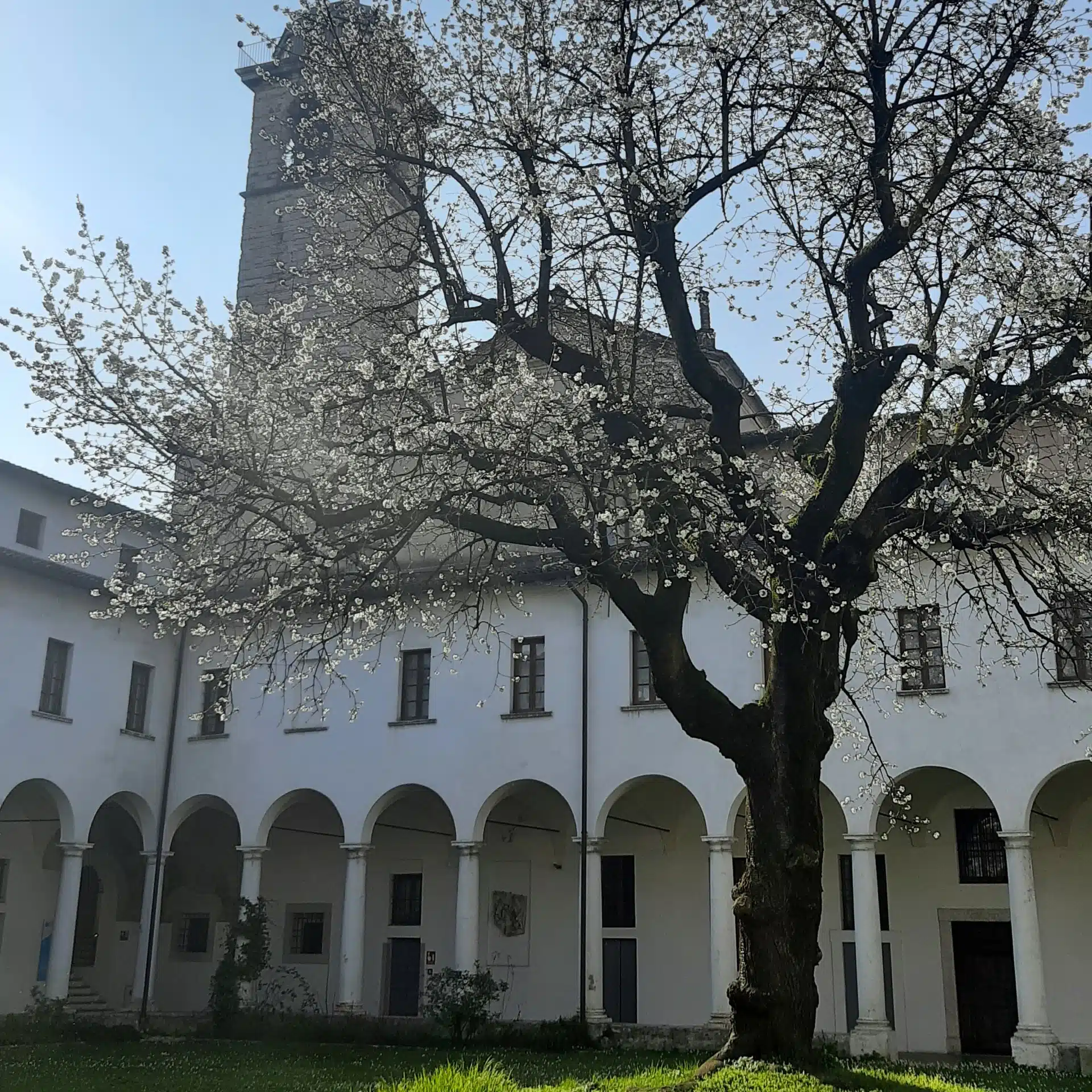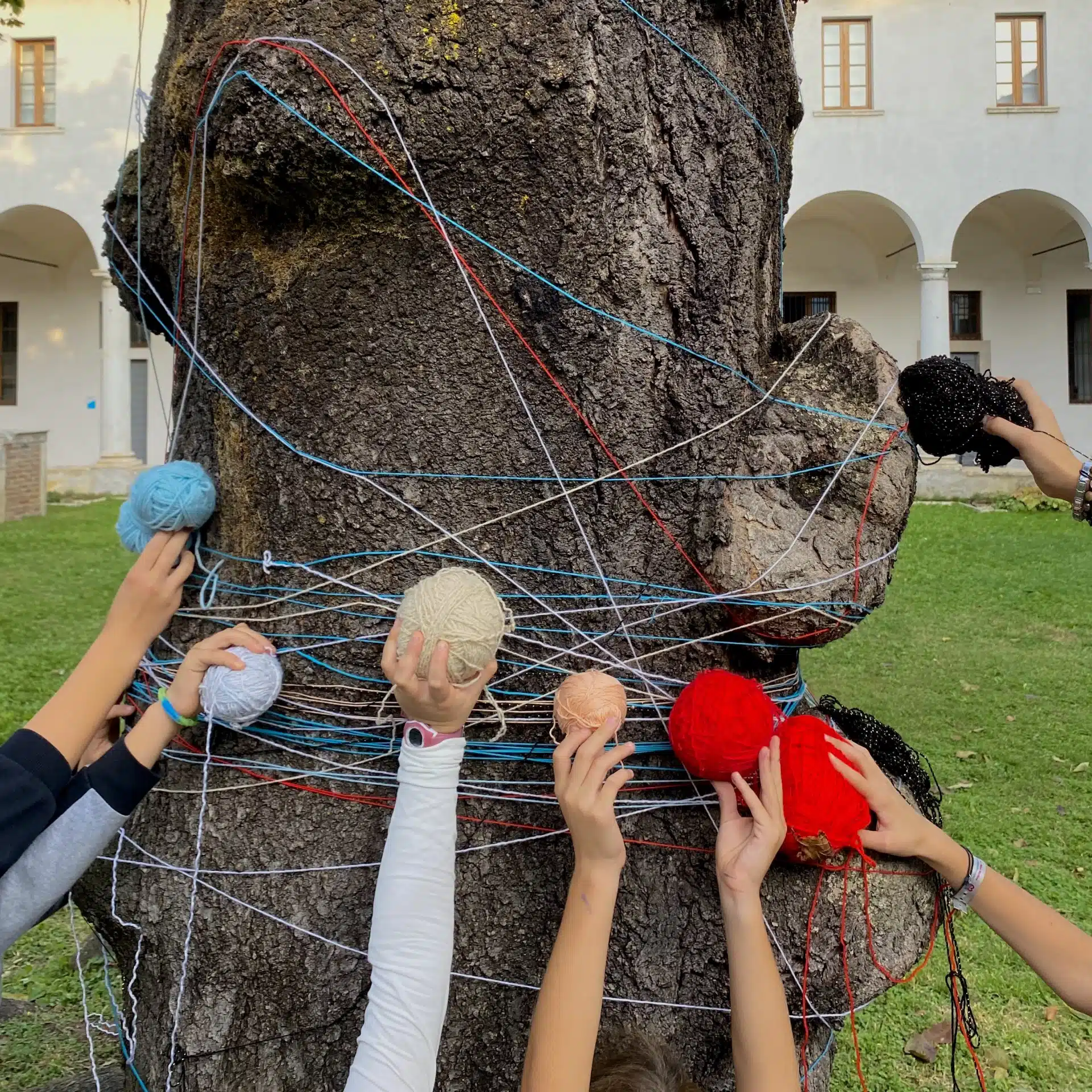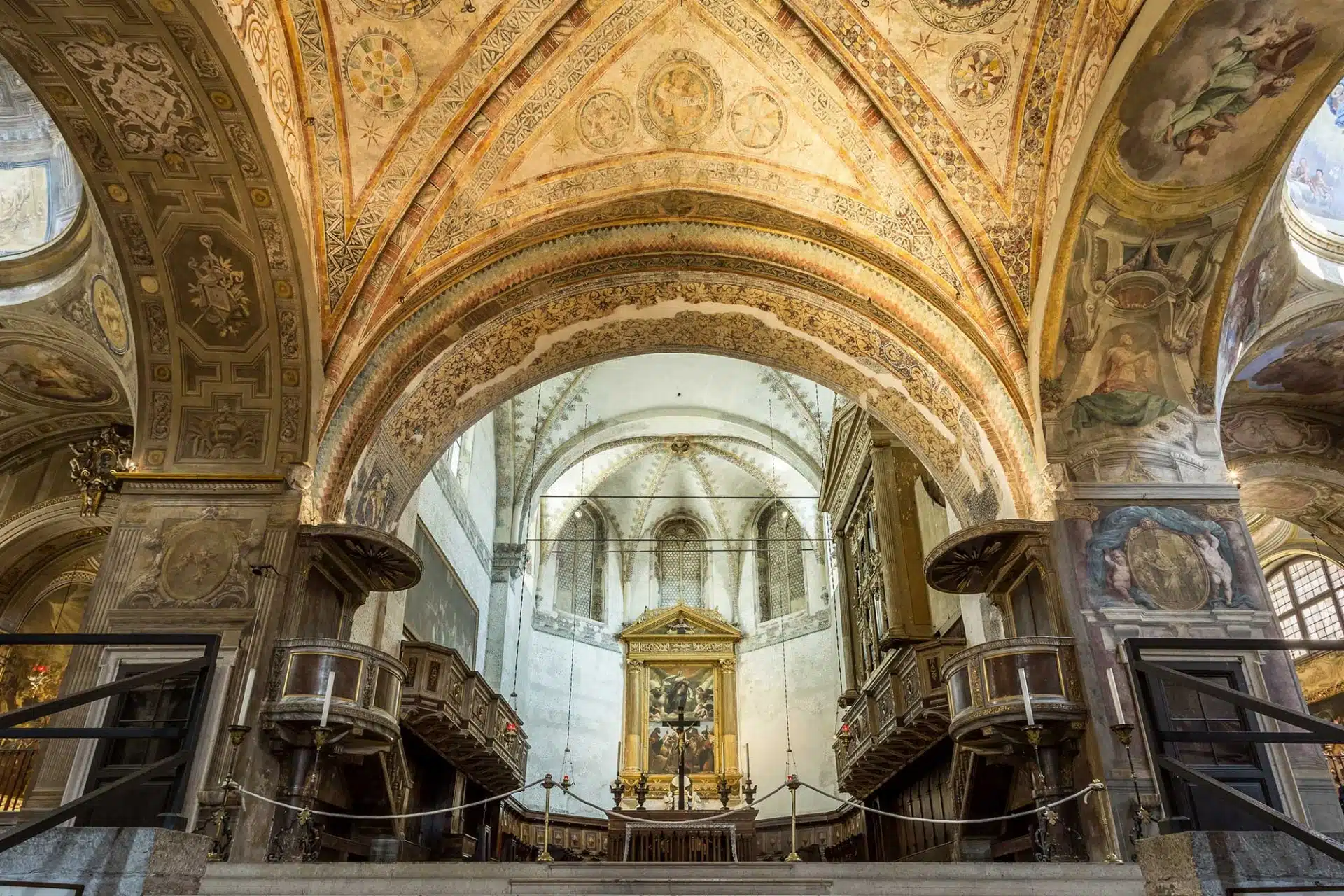Mariegola di Collio
Autore: Bottega di Floriano Ferramola Pergamena - 275x178 mm Provenienza: Memmo di Collio, Chiesa parrocchiale di Sant’Antonio Abate -
La Mariegola di Collio, datata 25 marzo 1523, fu commissionata dalla Confraternita dei Santi Antonio Abate, Faustino e Giovita di Memmo, frazione di Collio Valtrompia.
Contiene il testo degli Statuti regolanti i vari obblighi e doveri dei confratelli per la vita devozionale della comunità.
Don Paolo Guerrini nel 1936 menzionò per la prima volta la Mariegola di Collio all’interno della chiesa parrocchiale di Memmo. Negli anni Sessanta, il codice fu trasferito nella Biblioteca Queriniana di Brescia.
Fu poi spostata all’Archivio parrocchiale di Memmo e quindi nella sagrestia della chiesa, prima di trovare la sua sede definitiva nella collezione del Museo Diocesano di Brescia.
La decorazione miniata della Mariegola giace in buono stato di conservazione. È costituita da due scene a pagina intera, un iniziale calligrafica e i capilettera miniati delle varie rubriche degli Statuti.
Nella sua analisi tecnico-stilistica del 1964, Gaetano Panazza evidenziò la straordinarietà decorativa della Mariegola.
Le due pagine iniziali miniate sono la testimonianza delle profonde interazioni tra pittura e miniatura nell’ambiente artistico bresciano tra Quattrocento e Cinquecento. La decorazione è divisa in due settori e incorniciata da due fregi realizzati a foglia d’oro su sfondo azzurro.
Il primo foglio presenta una Crocifissione nel riquadro superiore e i Santi Sebastiano e Rocco in quello inferiore. Le scene sono incorniciate da un fregio di candelabri realizzati a foglia d’oro su sfondo azzurro e con i simboli dei Quattro Evangelisti.
Il secondo foglio presenta i Santi Antonio Abate, Faustino e Giovita nella parte superiore e le Tentazioni di Sant’Antonio in quella inferiore. I riquadri sono incorniciati da un fregio a candelabre e panoplie con le figure dei Dottori della Chiesa.
Tutte e quattro le scene sono ambientate in un paesaggio montuoso, con l’aggiunta della città turrita di Gerusalemme nella scena della Crocifissione. Viene delineato uno spazio preciso, descritto con potenza fantastica e nei minimi dettagli grazie alla luce tersa e calda che rende palpabile l’atmosfera e sfuma i contorni.
Le figure sono ritratte con vivo naturalismo in pose e gesti spontanei e partecipi. La loro solida volumetria è efficacemente resa dagli ampi panneggi delle vesti, lumeggiate con finissimi strati di foglia d’oro.
Gaetano Panazza individuò in queste miniature il cromatismo e il pacato gusto compositivo degli affreschi di Santa Maria in Solario realizzati da Floriano Ferramola, allievo di Vincenzo Foppa.
Si notano tuttavia evidenti influssi dell’arte nordica e dell’allora emergente Gerolamo Romanino nei tratti patetici e grotteschi degli sgherri nelle Tentazioni di San Gerolamo.











